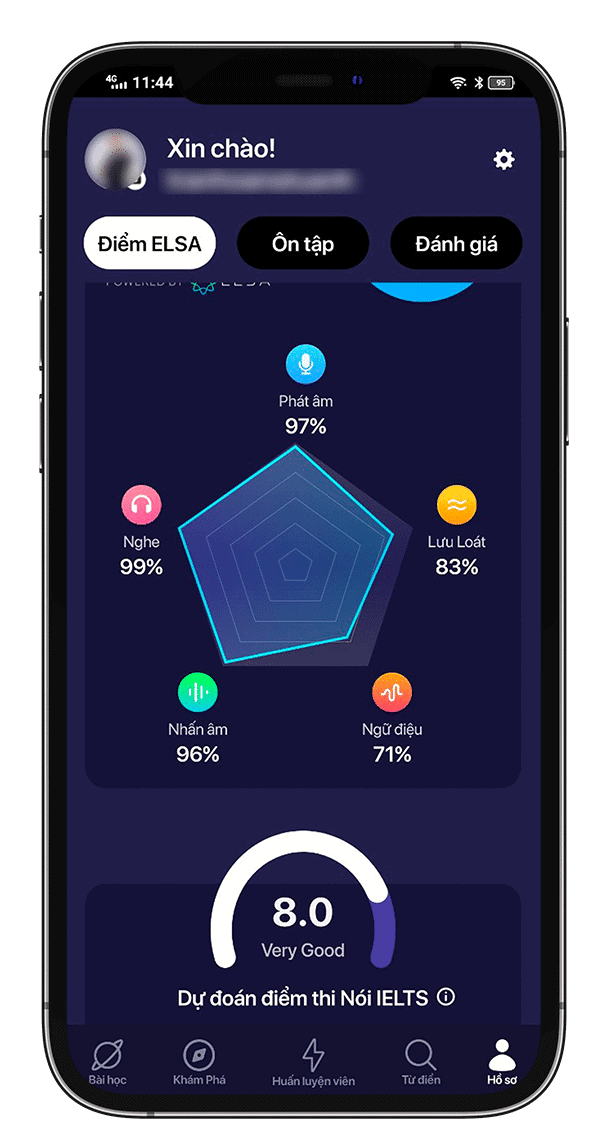
Tổng quan quá trình tự học IELTS 4 kỹ năng giúp đạt đến 8.5 overall
Hành trình tự học IELTS 4 kỹ năng hoàn toàn và đạt kết quả 8.5 IELTS của tác giả Huy Ipin trong bài viết dưới
Xin chào tất mọi người, mình là Thành Tất Lê, thành viên của group Tự học PTE-IELTS 9.0 , hôm nay mình đã quay trở lại với một bài viết mới, giải quyết vấn đề về Speaking part 3. Lần này chúng ta sẽ nghiên cứu về câu General statement trong Speaking part 3 nhé.
Cấu trúc trả lởi Speaking Part 3:

Liệt kê các ý với các cụm từ sau:
Vậy tại sao chúng ta cần có general statement (GS). Đối với các loại câu hỏi khác nhau, các GS nhìn sẽ hơi khác nhau một chút nhưng cuối cùng thì GS cũng chỉ báo hiệu cho người nghe về kế hoạch của câu trả lời/quan điểm của người nói mà chúng ta sẽ đưa ra.
Cụ thể, chúng ta sẽ đưa ra bao nhiêu ý. Do đó, nếu câu trả lời của các bạn đã vạch ra kế hoạch cụ thể như thế này, các bạn sẽ không bị lạc đi đâu được, mà giám khảo cũng sẽ thấy dễ theo dõi hơn.

Nói chung khi nhắc đến general statement thì mọi người cũng biết phải làm như thế nào rồi đấy. Cơ bản là trong Speaking Part 3 các bạn chỉ cần đưa ra nhận xét rằng vấn đề đang nêu sẽ được giải thích bằng nhiều khía cạnh. Bên dưới là những gợi ý để các bạn tham khảo nhé.
Example 1: (Do you think) children should play musical instruments?
GS 1a: I believe/opine/am convinced that it really depends on different aspects to determine whether a child should play musical instruments or not.
GS 1b: I disapprove/disagree/oppose that children should play any musical instruments because of some reasons. (tương tự với đồng ý).
Example: Why are there people who publicize their personal information on social media while there are others who do not?
GS: I guess there can be some explications to this polarizing situation.
Example: Do you agree that as the world is developing, the role of technology will become increasingly indispensable?
GS: I assume although technology has and will continue to become greatly influential in our life, I think there are still some facets of life that we can do without it. (sau đó phân tích vế 1 về một số các mặt có vai trò của technology, xong rồi vế 2 về những mặt không cần technology).
Example 1: What are the benefits of the internet?
Example 2: What are the negative impacts of tourism?
Example 3: What are the advantages and disadvantages of plastic?
GS 1: There are several gains that are cultivated by the invention of the internet (tương tự cho ex 2).
GS 3: While there are some gains to be yielded, there are also shortcomings that entail.
Example 1: What are the most important factors to consider when buying clothes?
Example 2: Is it important to make friends at school?
GS1: I presume there can be many various determinants when it comes to selecting clothes.
GS2: From my perspective, it’s true for the majority of people that having friends at school is the most worthwhile thing while you are in school.
Example 1: What problems are there with social media? How could they be addressed?
GS – vế 1: There are can be a plethora of detrimental issues with social networking sites (giải quyết câu này trước). Vế 2: Having said that, there are some solutions to addressing these riddles (nếu 2 câu đi cùng nhau thì mới có ‘having said that’ nhé các bạn).
Example 1: What do you think will happen to the industry of tourism in your country next 20 years?
GS: To the best of my knowledge/as far as I am concerned, I envisage that tourism in Vietnam will experience a dramatic transformation in many different ways.
Example: Would there be any disadvantages if there were no social media?
GS: Based on my observation, there would be a ton of shortcomings if social media were never invented.
Sau khi đưa ra GS, các bạn sẽ bắt đầu Speaking Part 3 bằng các từ nối để nói về các vấn đề mình muốn đề cập. Theo cấu trúc đã minh họa ở trên, các bạn chỉ cần đưa vào 2 ý là đủ.
First/firstly/first of all
First and foremost
To begin/start with
To commence
Off the top of my head
The first thing coming/springing to my mind
Second/secondly
In addition,
On top of that (disapproving) ~ what is worse
What is more
Besides ~ Also
Last but not least
Vậy là xong một câu hỏi IELTS Speaking part 3. Việc làm này không đơn giản, nhưng các bạn cố gắng làm theo cấu trúc thì dần dần sẽ tạo thành phản xạ và phong cách trong speaking part 3 thôi.
Hi vọng bài viết này sẽ giúp các bạn giải quyết nỗi sợ hãi trong speaking part 3. Chúc các bạn học tốt và nhớ đừng quên theo dõi tuhocielts9.com và Group Tự học PTE – IELTS 9.0 để học thêm những kiến thức bổ ích nhé.
Xem thêm những bài viết liên quan:
| 3 sai lầm “xương máu” khi luyện IELTS Speaking tại nhà! |
| Gia tăng pronunciation đến band 6.0 với 0 đồng đơn giản |
| Chia sẻ kỹ năng Nói Tắt (Contraction) cho Speaking IELTS |
Ứng dụng học nói tiếng Anh
chuẩn bản xứ tốt nhất thế giới


Hành trình tự học IELTS 4 kỹ năng hoàn toàn và đạt kết quả 8.5 IELTS của tác giả Huy Ipin trong bài viết dưới

Tốt nghiệp Master chuyên ngành giáo dục và đạt chứng chỉ TESOL tại đại học Bristol, tác giả của cuốn Mini Handbook: “Tư duy ngôn

Đối với hầu hết thí sinh, tăng band IELTS Writing luôn là nhiệm vụ khó nhất để đạt band điểm cao từ 6.5 trở lên
Copyright © 2020 by ELYSIA NGUYEN | Thiết kế Web và Automation Marketing bởi IM Anh Tran